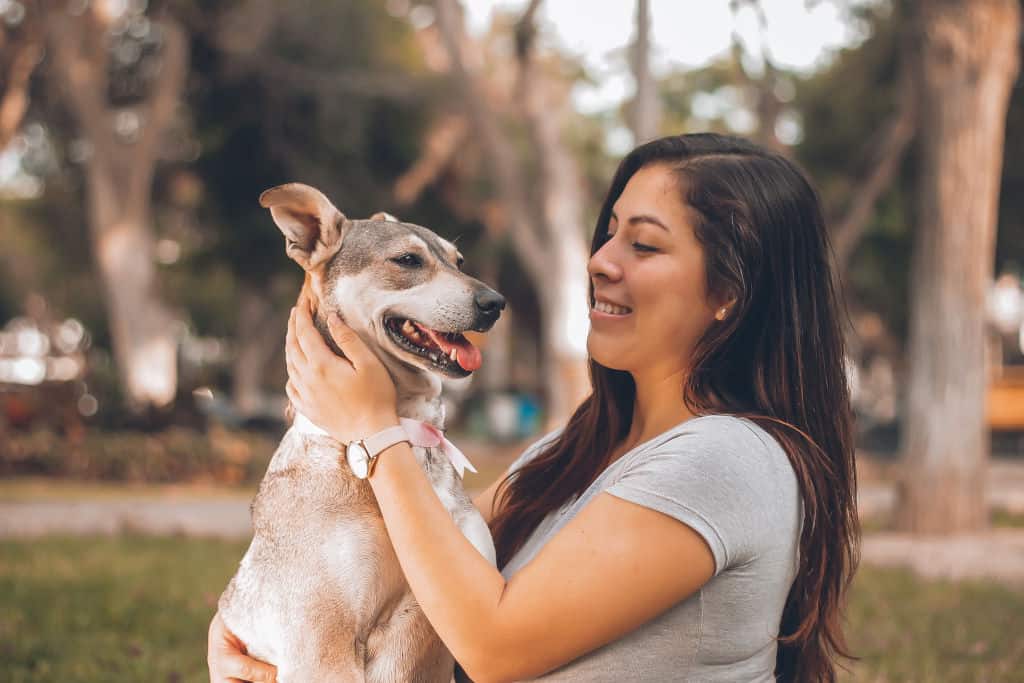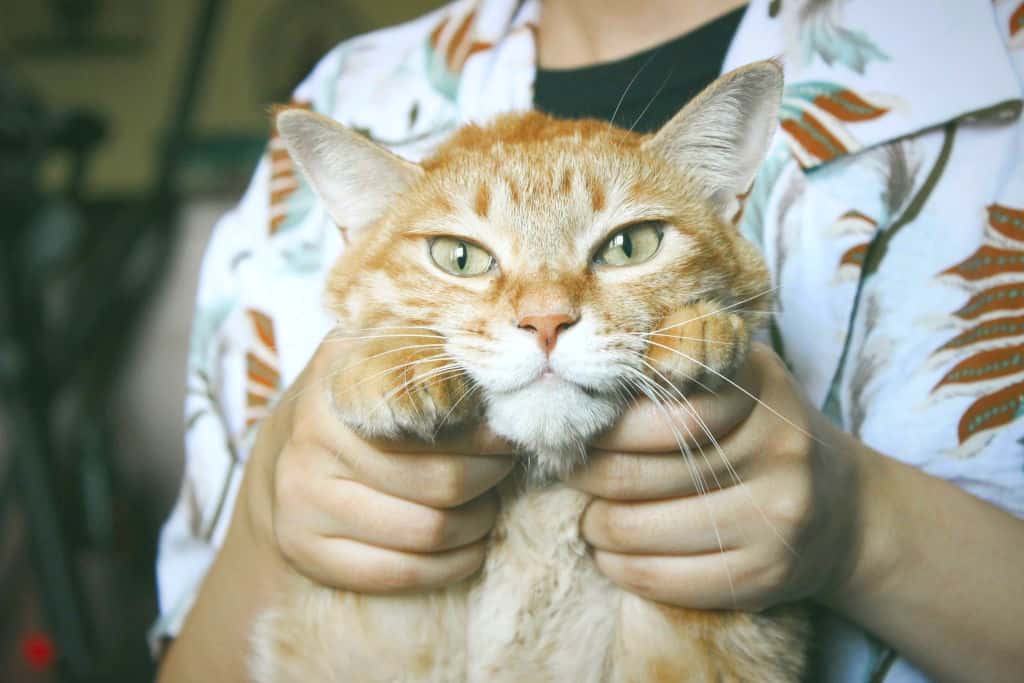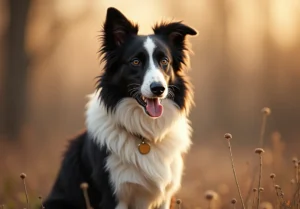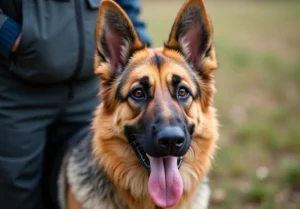It is difficult to say whether pets are aware that they are pets because they cannot communicate their thoughts and feelings to us as humans do.
Many pet owners believe that their animals understand their roles as companions and household members. Dogs, for example, have been trained to perform specific tasks or obey specific commands, implying that they understand their place within the family dynamic.
In some cases, the roles dogs play, from herding livestock to assisting people with disabilities, highlight their adaptability and might suggest a nuanced understanding of their role in relation to humans, though it doesn’t conclusively mean they view themselves as ‘pets.’
Other pets, such as cats, may exhibit behaviors that indicate they are more equal household members than subservient pets.
This article investigates how aware pets are, particularly dogs and cats, and how they perceive their owners.

How Aware Are Pets of Their Existence?
Pets, particularly dogs, are somewhat aware of their existence, though the degree of awareness varies depending on the animal and species.
Cat behavior is complex and, in many ways, reasonably easy to map into human behavior. There is compelling evidence that cats are conscious and have complex emotional lives. But self-awareness is something else entirely.
The mirror test has traditionally been used to determine whether an animal is self-aware. Most scientists agree that cats and dogs fail this test because they don’t recognize themselves in the mirror.
However, the ability to recognize oneself in a mirror is not a definitive test of self-awareness. It does not rule out the possibility that our pets are partially self-aware. Thus, researchers are still debating whether this ability is indicative of self-awareness in general
We used to believe that dogs lacked self-awareness because they failed the mirror test. Dogs are not visual creatures, so a new self-recognition test that involved sniffing was developed and found to contain a lot of evidence of canine self-awareness.
Dogs exhibit numerous signs of awareness, such as making human-like eye contact, which is unusual in animals. They can also point, whereas chimps cannot. This makes them fairly intelligent and aware of things that most animals are not.
In addition, dogs and cats have some form of the Theory of Mind, which means they understand (to some extent) that other beings have different perspectives than their own.
Dogs can learn the words and perform specific actions based on those words.
However, while dogs can remember 100 words and recognize their name if you say it to them, whether or not they associate it as an identifier of themselves is unknown. They may associate it with food or petting when you call their name. For all these reasons, we don’t have a reliable way of determining whether or not a dog or cat is self-aware.
Regardless of their level of self-awareness, pets bring joy and companionship to their human families, and they deserve to be treated with love and respect.
Do Dogs and Cats Realize They Are Dogs and Cats?
It’s difficult to say whether dogs understand their own species. However, evidence suggests that they have some sense of self.
Dogs have been taught to recognize and distinguish between various objects, including other dogs, implying that they may have some understanding of their own place in the world. They also recognize humans within and outside their group (owners vs non-owners).
Although dogs cannot recognize themselves in the mirror, they have some self-awareness and perform well in other self-recognition tests.
According to new research, scientists consider body awareness a component of self-awareness. Dogs’ behavior demonstrated body awareness and an understanding of the consequences of their actions. Although it does not pass the mirror test, it is a step toward self-awareness.
Furthermore, dogs can tell the difference between humans and dogs. Some pets recognize that humans are different from them because they smell and act differently. Our pets pick up on our scent easily; after enough time with us, our scent is easily recognizable.
Cats may not realize they are cats, but they have an intuitive awareness of other animals, allowing them to distinguish between prey and predators.
It’s interesting to note that when dogs exhibit submissive behaviors, like showing their belly or lowering their stance, it could be their way of acknowledging a human’s dominant position, subtly hinting at their own understanding of the hierarchy.
The bottom line is that more research is required to fully understand the extent to which pets are aware of their own existence.

Do Pets Think We Are Their Parents?
Many pet owners refer to themselves as their pets’ “parents,” and many people believe their animals do as well.
However, it is essential to remember that pets are not human and do not have the same cognitive abilities or worldview as humans. While pets and their owners may form strong bonds and rely on them for care and protection, they are unlikely to think of their owners the same way a child thinks of a parent.
So far, they have demonstrated that they view us as providers of food and protection. Therefore, pets are more likely to view their owners as sources of food, shelter, and affection rather than as parental figures.
Indeed, when dogs bring toys to their owners or when cats ‘gift’ them with prey, it could be an expression of a perceived mutual relationship rather than a clear sign of subservience.
However, while the word “parent” has a different meaning for humans, in the animal kingdom, a parent is precisely about that – survival and protection until the child reaches adulthood.
Do Dogs and Cats Realize We Are Humans?
Many dogs and cats have been observed to exhibit behaviors that indicate they understand the distinction between humans and other animals, such as preferring to be around humans or reacting differently to humans than other animals.
Dogs, in particular, have been seen to act differently based on their breed and react differently to different people, which could mean they can tell the difference between humans based on their species. Dogs can also recognize adults from babies.
In the same way, cats have been seen to recognize their owners and act differently around them than they do around strangers. This suggests that cats can tell the difference between people.
Evolutionarily, canines have been our companions for millennia, and this long-standing bond might have facilitated their ability to read our emotions, gestures, and even our intentions better than other animals. Whether this means they ‘know’ they are pets remains a subject of fascination.
One thing is sure: cats don’t think we’re cats, and dogs don’t think we’re dogs. They may “care” for us somehow, but they know we are not the same. Pheromones, visual differences, and a lack of response to typical “pet communication” keep them from confusing us.
Humans do not walk, talk, look, act, or smell like cats or dogs. They can use all these signals to distinguish us from other species.
Interestingly, when dogs show behaviors like wagging their tail upon our return or cats purring when in our presence, they might be signaling an acknowledgment of our unique role in their lives — not as fellow animals, but as something distinct and integral to their wellbeing.
Humans have domesticated dogs and cats for thousands of years. They have evolved specialized behaviors and physical characteristics that allow them to interact with humans more effectively over time. This could imply that they are more aware of the human species and our role in their lives.
There’s also evidence suggesting that both cats and dogs have developed vocalizations, like meows or barks, specifically tailored to communicate with humans, emphasizing their unique connection to us and perhaps an implicit understanding of their domesticated status.
However, the extent to which animals recognize differences between humans and other animals is still unknown. More research is needed to fully understand their cognitive abilities and worldview.
FAQs
Do pets miss their owners when they leave?
Most dogs have roughly the same ability to recognize their owner’s absence and to miss them. Their temperament and basic socialization determine their ability to cope. Cats are similar. Pets can also experience separation anxiety, which occurs when an animal is separated from its owner or caregiver.
Do pets remember when they are hurt?
Pets may recall being hurt or injured, especially if the injury was severe or caused pain or discomfort. Memory is a complex process, and the ability of animals to remember past events varies.
The temperament and personality of each pet may impact how well they remember certain events. Some pets may be prone to forgetting previous events, whereas others may have stronger memories.
Can pets worry about their owners?
Pets may be worried about their owners, especially if they have a strong bond with them and are accustomed to having their owners around regularly. Pets, especially dogs, are highly social animals that can form strong emotional bonds with their owners.
Alex, a passionate animal lover, has experience in training and understanding animal behavior. As a proud pet parent to two dogs and three cats, he founded AnimalReport.net to share insights from animal experts and expand his knowledge of the animal kingdom.




